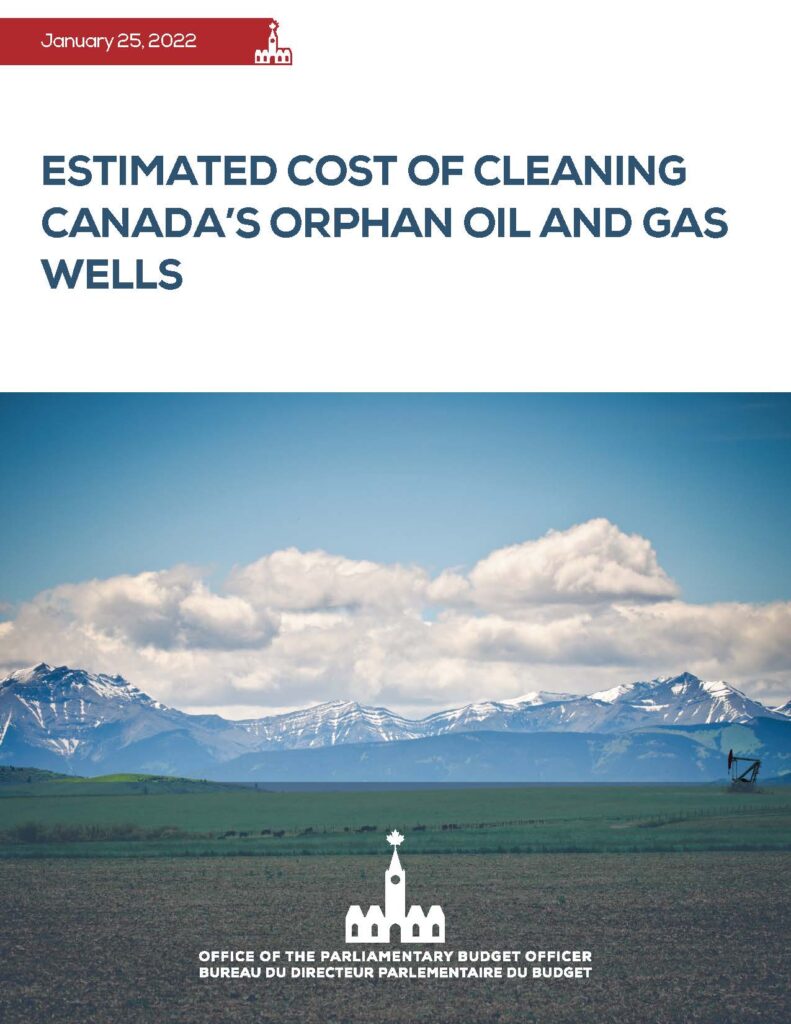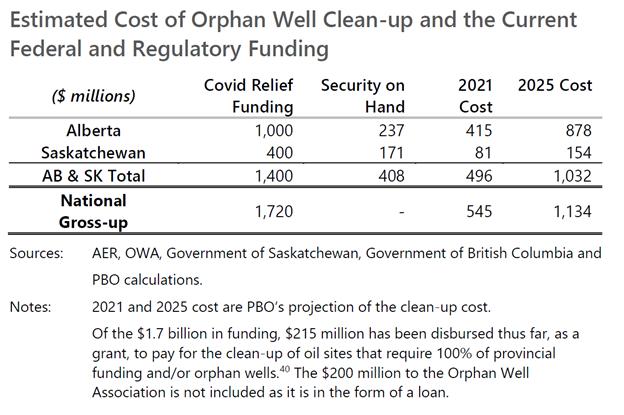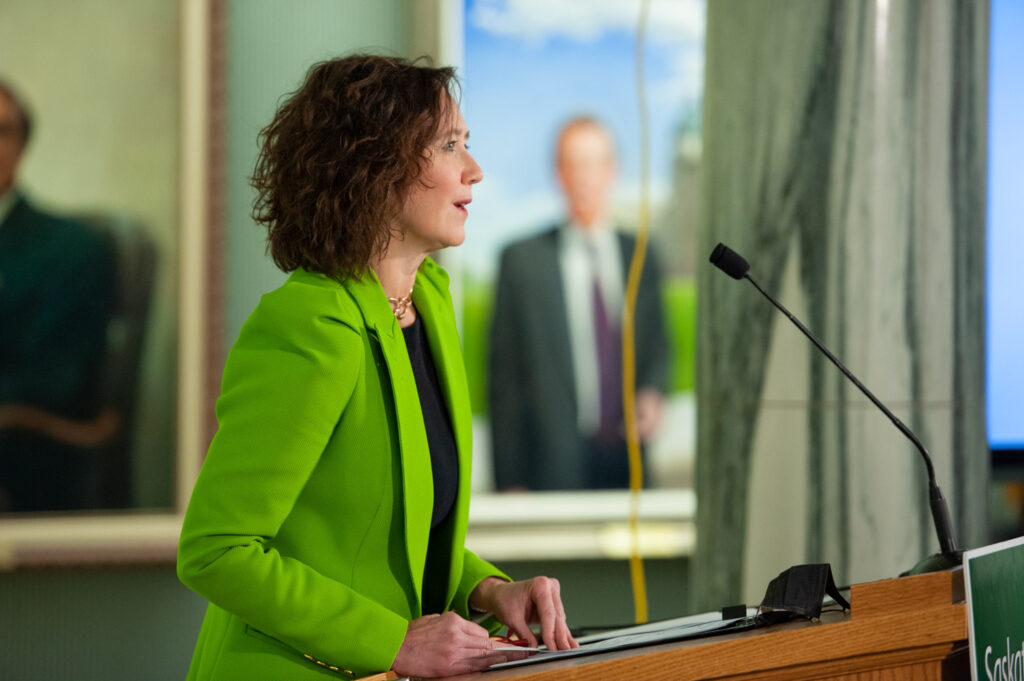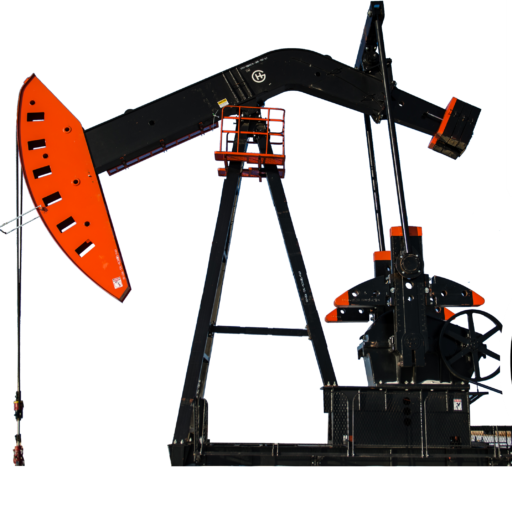
Source: Parliamentary Budget Officer
REGINA – In response to a recent report from the Parliamentary Budget Office (PBO) regarding orphan wells particularly in Alberta and Saskatchewan, Energy and Resources Minister Bronwyn Eyre wants to make something very clear: the Saskatchewan taxpayer is not on the hook for orphan wells. It is an industry responsibility.
That report, issued on Jan. 25, raised concerns about the number of inactive and plugged wells in Alberta and Saskatchewan, noting, “Currently, only 35 per cent of all wells in Alberta and 39 per cent of all wells in Saskatchewan are active, the lowest share in recorded history.” You can read the entire report here: RP-2122-026-S–estimated-cost-cleaning-canada-orphan-oil-gas-wells–cout-estimatif-nettoyage-puits-petrole-gaz-orphelins-canad
It raises concerns that the cleanup of current and potentially future orphan wells could fall to the taxpayer.
The report stated, “In 2020, the federal government provided $1.7 billion to the governments of Alberta, Saskatchewan, and British Columbia to fund the clean-up of inactive oil and gas wells as part of the COVID-19 Economic Response. As the number of orphan wells rise, it is likely that the cost will have to be funded through a mixture of industry, provincial and federal sources.
“PBO estimates the cost for orphan well clean-up, on a national level, to be $361 million as of 2020. This cumulative cost is forecasted to rise to $1.1 billion by 2025. The estimate pertains only to onshore conventional oil and gas production and does not include potential clean-up costs of oil sands.”
Eyre contests “false narrative”
Eyre spoke to Pipeline Online by phone at length on Jan. 26. She said, “We feel that overall, it reflects quite well on Saskatchewan. On the work we’ve done, it’s positive. It acknowledges that we have the security to cover the liabilities. But the biggest, most unfortunate mischaracterization is the suggestion that taxpayers will have to carry the burden of these orphan wells, and the cleanup of these orphan wells in the future and that’s just that’s just not the case. Our orphan well fund is industry-funded, and to suggest otherwise, or hint otherwise, is a false narrative. The Orphan Well Program is funded by industry, there’s no burden on the taxpayer, as the report suggests, so that’s, I think, the most important thing to clear up.”
“It states as the number of orphan wells rise, it’s likely that the costs have to be funded through a mixture of industry, provincial and federal sources and again, that’s just not true. As far as the provincial government, not one penny of provincial funding has gone toward orphan work in Saskatchewan, and that’s not going to change any time soon,” Eyre emphasized.
The Orphan Well Fund was put in place in 2010, she noted.
How many wells?
The Saskatchewan Ministry of Energy and Resources website has an Excel spreadsheet listing all orphan wells in the province. That spreadsheet was most recently updated on Dec. 31, 2021, The whole list, which is almost entirely wells, but includes some facilities, can be found here: https://www.saskatchewan.ca/business/agriculture-natural-resources-and-industry/oil-and-gas/liability-management/orphan-fund-procurement-program/orphan-inventory.
On that list there are, or were, 1,627 wells and facilities described as orphaned as of Dec. 31, 2021. Of those, the orphan abandonment status was “completed” for 748, “no longer required” for 147, “not applicable” for 235, leaving 497 still on the list categorized as “required.” Additionally, 739 wells and facilities are listed where a viable working interest participant (WIP) has been identified.
- 0098 SASPO-2874_Self Serve Campaign_New Connects_Youtube_v30098 SASPO-2874_Self Serve Campaign_New Connects_Youtube_v3
- 0100 Turnbull Project Manager0100 Turnbull Project Manager
- 0099 Mryglod Steel 1080p0099 Mryglod Steel 1080p
- 0097 Eagle Sky Ventures LTD0097 Eagle Sky Ventures LTD
- 0095 Fast Trucking nearly 70 years good at it0095 Fast Trucking nearly 70 years good at it
- 0053 Kingston Midstream Westspur Alameda Click Before You Dig0053 Kingston Midstream Westspur Alameda Click Before You Dig
- 0092 Turnbull projects big and small0092 Turnbull projects big and small
- 0046 City of Estevan This is Estevan Teaser0046 City of Estevan This is Estevan Teaser
- 0087 Lori Carr Coal Expansion0087 Lori Carr Coal Expansion
- 0077 Caprice Resources Stand Up For Free Speech0077 Caprice Resources Stand Up For Free Speech
- 0076 Latus only0076 Latus only
- 0061 SIMSA 2024 For Sask Buy Sask0061 SIMSA 2024 For Sask Buy Sask
- 0055 Smart Power Be Smart with your Power office0055 Smart Power Be Smart with your Power office
- 0051 JML Hiring Pumpjack assembly0051 JML Hiring Pumpjack assembly
- 0049 Scotsburn Dental soft guitar0049 Scotsburn Dental soft guitar
- 0041 DEEP Since 2018 now we are going to build0041 DEEP Since 2018 now we are going to build
- 0032 IWS Summer hiring rock trailer music
- 0022 Grimes winter hiring
- 0021 OSY Rentals S8 Promo
- 0018 IWS Hiring Royal Summer
- 0013 Panther Drilling PO ad 03 top drive rigs
- 0006 JK Junior
- 0002 gilliss casing services0002 gilliss casing services
- 9002 Pipeline Online 30 sec EBEX9002 Pipeline Online 30 sec EBEX
- 9001
Note that those numbers reflect the well being abandoned, as in plugged and capped. The number of wells and facilities that have been fully reclaimed, as in the surface restored to original condition, is 323. Full reclamation is a process that often takes several years. A further 27 sites have had an “exemption acquired,” and 155 are “no longer required.” A total of 1,112 wells and facilities still require site reclamation.
According the Ministry, in these circumstances the viable WIP will assume responsibility for all costs associated with the abandonment/reclamation work required under the orphan program. The viable WIP and ministry’s orphan group will work together to ensure the work is scheduled and completed in a timely manner.
Similarly, “no longer required” means reclamation work was initially required under the orphan program when deemed; however, prior to the work being completed, the licence was transferred to an eligible licensee instead. In other words, another company may have purchased the well and taken over its responsibility. A prime example is a number of wells orphaned by Bow River Energy Ltd. in 2020. A number of those were picked up by Bonavista Energy Corporation, which assumed their liability.
Is a well abandoned or orphaned?
Eyre pointed out that there is sometimes confusion in the terminology used within the media regarding what an “abandoned well” actually is. Some seem to think it’s a well that’s no longer in production and has no remaining owner. In actuality, an “abandoned well” has been plugged, cemented and rendered to “a safe and environmentally sound state.”
“In this report, the term ‘abandoned well’ is used to describe well that may soon become orphan wells, due to the fact the owner potentially becoming insolvent, that sort of thing. We feel that’s unnecessarily unclear and ambiguous,” Eyre said.
Indeed, the report uses the term “abandoned” in a manner that is not standard within industry. The Schlumberger Oilfield Glossary refers to “plug and abandon” as “to prepare a wellbore to be shut in and permanently isolated.”
The report uses the term very differently. It states that nationwide, “Most notably, the estimate excludes the roughly 7,400 wells as of 2020 that currently do not have a solvent owner and require clean-up in the form of either plugging and/or reclamation but have yet to transition to orphan status. These wells, which PBO refers to as abandoned, represent a deferred liability, and contribute to the expected clean-up cost to be borne over the next five years.
“As of 2020, the number of orphaned and abandoned wells in Alberta and Saskatchewan totaled roughly 10,100 and 7,400 wells, respectively, of which 15,700 of these wells require clean-up in the form of either plugging and/or reclamation. If all abandoned wells were to enter the orphan inventory, the cost would rise from $361 million in 2020 to $801 million,” the PBO said.
Later on, it notes, “Data shows that in certain cases the wells of an insolvent company may slowly enter the orphan well inventory over multiple years. The PBO refers to these wells as abandoned, which are defined as either inactive or plugged wells owned by an insolvent company.”
How much does an abandonment cost?
“The PBO estimates that, on average, it would cost $58,000 and $28,000 to plug and reclaim a well, respectively,” the report said.
Two examples were given as a basis for those estimates. “In 2019 both Houston Oil & Gas Ltd. and Wolf Coulee Resources Inc. went bankrupt. As of 2019, Houston Oil & Gas and Wolf Coulee Resources had 1,422 and 177 wells that were not fully cleaned, respectively.
“The plugging and reclamation obligations are estimated to be $16.4 million for Wolf Coulee Resources, or equivalently $93,000 per well on average. For Houston Oil & Gas, the clean-up obligations are estimated to cost $81.5 million, or $57,000 per well on average.
“The total cost was calculated by multiplying the total number of orphan wells, broken down by the clean-up work required, by the average cost of clean-up.
- 0098 SASPO-2874_Self Serve Campaign_New Connects_Youtube_v30098 SASPO-2874_Self Serve Campaign_New Connects_Youtube_v3
- 0100 Turnbull Project Manager0100 Turnbull Project Manager
- 0099 Mryglod Steel 1080p0099 Mryglod Steel 1080p
- 0097 Eagle Sky Ventures LTD0097 Eagle Sky Ventures LTD
- 0095 Fast Trucking nearly 70 years good at it0095 Fast Trucking nearly 70 years good at it
- 0053 Kingston Midstream Westspur Alameda Click Before You Dig0053 Kingston Midstream Westspur Alameda Click Before You Dig
- 0092 Turnbull projects big and small0092 Turnbull projects big and small
- 0046 City of Estevan This is Estevan Teaser0046 City of Estevan This is Estevan Teaser
- 0087 Lori Carr Coal Expansion0087 Lori Carr Coal Expansion
- 0077 Caprice Resources Stand Up For Free Speech0077 Caprice Resources Stand Up For Free Speech
- 0076 Latus only0076 Latus only
- 0061 SIMSA 2024 For Sask Buy Sask0061 SIMSA 2024 For Sask Buy Sask
- 0055 Smart Power Be Smart with your Power office0055 Smart Power Be Smart with your Power office
- 0051 JML Hiring Pumpjack assembly0051 JML Hiring Pumpjack assembly
- 0049 Scotsburn Dental soft guitar0049 Scotsburn Dental soft guitar
- 0041 DEEP Since 2018 now we are going to build0041 DEEP Since 2018 now we are going to build
- 0032 IWS Summer hiring rock trailer music
- 0022 Grimes winter hiring
- 0021 OSY Rentals S8 Promo
- 0018 IWS Hiring Royal Summer
- 0013 Panther Drilling PO ad 03 top drive rigs
- 0006 JK Junior
- 0002 gilliss casing services0002 gilliss casing services
- 9002 Pipeline Online 30 sec EBEX9002 Pipeline Online 30 sec EBEX
- 9001
“The PBO estimates the combined liability in Alberta and Saskatchewan to be approximately $329 million as of 2020,” the report said.
Eyre took issue with those cost estimates, saying they were “on the high end.” The average costs for plugging and reclaiming orphan wells in this province is more like $30,000 for plugging (abandonment) and $20,000 to $25,000 for site reclamation, according to the minister. “The cumulative orphan cost, whatever it is, and however you get there, is completely manageable for the orphan fund,” she said.
The report itself notes a disparity. In an appendix, it says, “According to the OWA’s 2020-21 annual report, the average cost of plugging a well was $23,000 and the average cost of reclaiming a site was $22,500.42.
“The Alberta Liabilities Disclosure Project estimates plugging costs between $53,118 and $84,547 per well and reclamation costs between $107,111 and $194,539 per site.”
Orphan wells not part of Accelerated Site Closure Program
Another distinction to be made is between Saskatchewan’s Orphan Well Fund and the Accelerated Site Closure Program (ASCP). The latter program was brought in during the summer of 2020 as a relief program to assist the oilpatch at a time when the COVID-19 pandemic cratered oil prices and brought a lot of industry activity to a screeching halt. Many workers were laid off and many service companies were having a tough time.
The $1.7 billion federal program which funded the ASCP is referred to as the Site Rehabilitation Program (SRP), which is also the name the Alberta program went by. It was meant to get people working again.
Saskatchewan was allocated $400 million in federal funds from the SRP for the ASCP. However, those funds were not used for orphan well abandonments. The ASCP is in its final round, with the last $55 million in funding to be allocated to eligible companies. Saskatchewan, Alberta and British Columbia are requesting more time to complete the program. In Saskatchewan, 526 companies have benefitted from the program. “It’s been very successful,” Eyre said. “We saw it as an absolute economic necessity program, and structured it accordingly. At the time, and it was, and has been a great benefit to get people back to work, which was certainly very, very important at the time.”
The PBO report alludes to this funding and orphan wells, implying a link. It states, “The federal government provided up to $1.7 billion to the governments of Alberta, Saskatchewan, and British Columbia to fund the clean-up of inactive oil and gas wells as part of COVID-19 Economic Response. Of the $1.7 billion, $1 billion went to the government of Alberta for site clean-up, $200 million went to the OWA in the form of a loan to support the clean-up of orphan sites, $400 million went to the government of Saskatchewan and $120 million went to the government of British Columbia.”
It continues, “At face value, the $1.7 billion allocated by the federal government to clean-up inactive oil and gas wells exceed the estimated liability over the next five years. At this time, just under half of the traceable funds in Alberta went to 10 companies, who received a total of $222 million. According to the PBO’s model, there is a low likelihood that these 10 companies will default over the next year.”
Indeed, a table within the report includes the “COVID Relief Funding” of $400 million with the $171 million security Saskatchewan has on hand for orphan well cleanup.

Source: Parliamentary Budget Officer
However, the report then points out that Alberta’s Orphan Well Association “was not eligible to receive grant funding under the SRP and received $200 million in the form of a repayable loan. Therefore, this funding is not estimated to materially reduce the liability of $361 million in 2020.”
This portion of the report does not provide further details on Saskatchewan.
Additionally, a May 2021 Government of Canada information letter regarding “Site closure support and project manager announcement” with regards to Indian Oil and Gas Canada referenced the Site Rehabilitation Program and orphan wells. It stated in the Frequently Asked Questions:
“Are orphan wells included in the provincial SRPs?”
“No. Orphan well oversight is through provincial well associations and is outside the provincial SRPs. For further information, First Nations can contact Environmental Analyst (by First Nation), or email aadnc.iogc.environment.aandc@canada.ca.”
So, depending on which document you look at, the federal government either wanted, or at least implied that orphan wells should have been covered under the SRP, or said they were not covered.
- 0098 SASPO-2874_Self Serve Campaign_New Connects_Youtube_v30098 SASPO-2874_Self Serve Campaign_New Connects_Youtube_v3
- 0100 Turnbull Project Manager0100 Turnbull Project Manager
- 0099 Mryglod Steel 1080p0099 Mryglod Steel 1080p
- 0097 Eagle Sky Ventures LTD0097 Eagle Sky Ventures LTD
- 0095 Fast Trucking nearly 70 years good at it0095 Fast Trucking nearly 70 years good at it
- 0053 Kingston Midstream Westspur Alameda Click Before You Dig0053 Kingston Midstream Westspur Alameda Click Before You Dig
- 0092 Turnbull projects big and small0092 Turnbull projects big and small
- 0046 City of Estevan This is Estevan Teaser0046 City of Estevan This is Estevan Teaser
- 0087 Lori Carr Coal Expansion0087 Lori Carr Coal Expansion
- 0077 Caprice Resources Stand Up For Free Speech0077 Caprice Resources Stand Up For Free Speech
- 0076 Latus only0076 Latus only
- 0061 SIMSA 2024 For Sask Buy Sask0061 SIMSA 2024 For Sask Buy Sask
- 0055 Smart Power Be Smart with your Power office0055 Smart Power Be Smart with your Power office
- 0051 JML Hiring Pumpjack assembly0051 JML Hiring Pumpjack assembly
- 0049 Scotsburn Dental soft guitar0049 Scotsburn Dental soft guitar
- 0041 DEEP Since 2018 now we are going to build0041 DEEP Since 2018 now we are going to build
- 0032 IWS Summer hiring rock trailer music
- 0022 Grimes winter hiring
- 0021 OSY Rentals S8 Promo
- 0018 IWS Hiring Royal Summer
- 0013 Panther Drilling PO ad 03 top drive rigs
- 0006 JK Junior
- 0002 gilliss casing services0002 gilliss casing services
- 9002 Pipeline Online 30 sec EBEX9002 Pipeline Online 30 sec EBEX
- 9001
No ambiguity for Saskatchewan on who pays for orphan wells
Saskatchewan, however, is quite clear on this. Eyre said, “The Orphan Well Program is not part of the abandonment program in Saskatchewan. That’s completely covered by the OWF (Orphan Well Fund). And we feel it’s important that it remain industry funded, not taxpayer funded.”
Asked for clarification, she said, “With the federal funding, in terms of inventory that could be applied from the federal funding to that, no, on the orphan front. No, because we feel that it’s important that that the integrity, if you like, of the programs, remain as an industry funded program.”
Eyre continued, “That’s taxpayer money, right? And I think that, to me, it was money, obviously, by the federal government and we felt it was manageable in terms of it remaining an industry-funded program. We’re proud of it. It’s worked well. It’s absolutely something that can continue to be paid by industry.
“And I guess the theoretical reason, or the policy reason behind that, was that if the integrity of the program is that industry be able to cover that, then they should continue to do that, without taxpayer money.”
She pointed out the government brought in the licensee liability rating program that’s just a further safeguard against potential orphan wells.
“We’ve collected over $170 million in security of company’s assets. And I mean, in terms of, of insolvency or bankruptcy, of course, no government program, no government can ever guarantee that no company will ever go insolvent, but it can manage the risk,” she said.

Saskatchewan Minister of Energy and Resources Bronwyn Eyre. Photo by Brian Zinchuk
“We’re strengthening that. We’re getting even more of an accurate reflection of a company’s corporate health of debts versus liabilities. Corporate solvency, we’re basically ensuring that that system is, and the regulations behind it, are stronger than ever.
Eyre said abandonments were going well prior to COVID, noting, “The record of the province was strong going into COVID. It was strong even before the abandonment program.”
She said in in 2019, 2,000 wells were cleaned up, an increase of 240 per cent over 2016.
“There’s no ambiguity about who is paying for the cleanup of orphans, and in Saskatchewan, that’s the sector,” Eyre said.
Eyre added that the oil and gas sector in Saskatchewan is unique in that it pays for 90 per cent of the regulatory costs associated with site cleanups. “I’ve said that a million times I would just I wish that it only got presented and put out there a little bit more and it’d be completely unambiguous that this is not taxpayer funded, in Saskatchewan, with orphans.”
Orphan expense forecast
Eyre also took issue with the PBO forecast for orphan expenses in the future, calling it speculative. “It’s only as good as the price forecast – any speculation, any model. That price forecast is notoriously hard to predict.”
She noted that 2020 was a “perfect storm,” and the culmination of a lot of other challenging years. “There’s no question about that, in terms of debt, in terms of capital budgets. And in terms of companies being melded into other companies and no succeeding, and so on,” she said, but added things are more positive now, with higher commodity prices.
If Eyre’s numbers of $55,000 per well for abandonment ($30,000) and reclamation ($25,000) stayed consistent for the remaining 497 wells on the “required” list, that would work out to $27.3 million to abandon and reclaim those wells.
To complete reclamation on the remaining 615 sites listed as “required” beyond those 497 wells, at $25,000 each, it would work out to a further $15.4 million. The total would be roughly $42.7 million, less than the remaining $55 million of the $400 million allocated by the federal government.
Eyre said, “In terms of the security, in terms of the ability to manage the inventory, that is something that the province is more than confident it can continue to do.”
“I guess with this report, for the reasons that I’ve kind of gone through, I think that it creates perhaps some ambiguity around that where there shouldn’t be,” Eyre said.
- 0098 SASPO-2874_Self Serve Campaign_New Connects_Youtube_v30098 SASPO-2874_Self Serve Campaign_New Connects_Youtube_v3
- 0100 Turnbull Project Manager0100 Turnbull Project Manager
- 0099 Mryglod Steel 1080p0099 Mryglod Steel 1080p
- 0097 Eagle Sky Ventures LTD0097 Eagle Sky Ventures LTD
- 0095 Fast Trucking nearly 70 years good at it0095 Fast Trucking nearly 70 years good at it
- 0053 Kingston Midstream Westspur Alameda Click Before You Dig0053 Kingston Midstream Westspur Alameda Click Before You Dig
- 0092 Turnbull projects big and small0092 Turnbull projects big and small
- 0046 City of Estevan This is Estevan Teaser0046 City of Estevan This is Estevan Teaser
- 0087 Lori Carr Coal Expansion0087 Lori Carr Coal Expansion
- 0077 Caprice Resources Stand Up For Free Speech0077 Caprice Resources Stand Up For Free Speech
- 0076 Latus only0076 Latus only
- 0061 SIMSA 2024 For Sask Buy Sask0061 SIMSA 2024 For Sask Buy Sask
- 0055 Smart Power Be Smart with your Power office0055 Smart Power Be Smart with your Power office
- 0051 JML Hiring Pumpjack assembly0051 JML Hiring Pumpjack assembly
- 0049 Scotsburn Dental soft guitar0049 Scotsburn Dental soft guitar
- 0041 DEEP Since 2018 now we are going to build0041 DEEP Since 2018 now we are going to build
- 0032 IWS Summer hiring rock trailer music
- 0022 Grimes winter hiring
- 0021 OSY Rentals S8 Promo
- 0018 IWS Hiring Royal Summer
- 0013 Panther Drilling PO ad 03 top drive rigs
- 0006 JK Junior
- 0002 gilliss casing services0002 gilliss casing services
- 9002 Pipeline Online 30 sec EBEX9002 Pipeline Online 30 sec EBEX
- 9001
